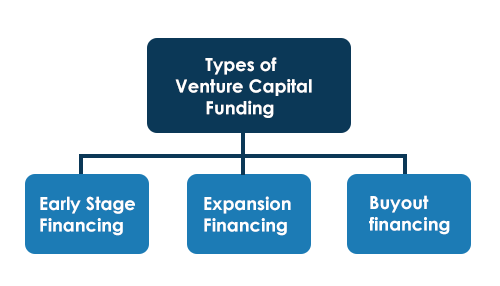3 Types of Venture Capitalists Available to Fund Your Startup
Several types of venture capitalists are available to fund your startup. However, there are three different types that you should be aware of. They are listed below.
Early-stage ventures
During an economic downturn, there are many investment opportunities. These are often only present during down cycles, such as the one we are currently experiencing. This gives new entrants a head start, allowing them to create companies that are more likely to survive and thrive in the long run. The resulting companies may also be more innovative, which will result in greater competition for the best ideas. In the end, if you don’t act fast, you may miss out on an existential threat.
The top three investments I made in my career were from Dieter von Holtzbrinck Ventures, nosier, and SixThirty Ventures. Dieter von Holtzbrinck provides financial funding and management know-how, nosier brings profitable digital solutions to customers, and SixThirty Ventures invests in global Enterprise Technology startups.
The top three investments in the above list are all tinkering with the old, stodgy, way of doing things. These include an ingenious way to make a mobile phone that can learn and teach, a novel way to track the human heart, and a startup that will change the world of cybersecurity. The former is a first-of-its-kind and will be featured on a TV commercial. Moreover, a new app, called PulseTip, is the latest to get a major funding boost.
The neosfer sprite is a little less exciting, but still worth a look. The neosfer is an innovation unit of the Commerzbank Group. It operates through three areas of invest: a seed fund, a pre-accelerator, and a venture capital fund. They also have an impressive portfolio of digital technologies, including Big Data, cloud computing, and cybersecurity. They also offer a slew of networking opportunities, such as the nosier meetups, and are proud sponsors of the Innovation Festival. Nosher also boasts a well-curated portfolio of high-calibre companies, including the world’s first and most advanced 3D printed augmented reality glasses, the world’s first digital currency, and a telecommunications company that will revolutionize the way people communicate.
The neosfer is a clever piece of kit, and it’s impressive that a new product was developed with its own team of developers and engineers. This is not to be confused with the nosier’s more conventional brethren, however. Rather, the nosier is a company that develops a product with an eye towards bringing it to market, in a relatively short amount of time.
Mentoring and guidance
Getting a mentor is an important way for youth to build their skills and become successful. They can learn important lessons and gain confidence as they build leadership skills. The mentor may also provide them with guidance and advice.
A mentoring relationship may be informal or formal. Formal mentoring involves a program that matches mentors with mentees. Some of these programs include coaching, life skills training, and tutoring. However, formal programs are usually more effective when the mentors are intrinsically motivated to help the mentee.
The benefits for both the mentor and mentee include a number of personal and professional growth opportunities. Mentoring is also an effective means of giving back to the community. It can also help youth cope with the stressful changes they experience at home and at work. It can help them improve their academic and social outcomes. It may also help them avoid delinquent acts.
A mentoring relationship requires both parties to respect each other. This can be achieved through basic social etiquette. Respect also serves as a social lubricant, providing mentors and mentees with a mutually beneficial relationship.
When a relationship is not based on mutual respect, it is likely to become dysfunctional. A mentor needs to be empathetic and caring. In addition to respect, a mentoring relationship needs to be long-lasting and consistent.
In many cases, a mentor’s two primary functions are to provide advice and to teach. A mentee may also teach his mentor valuable lessons about emerging issues or new methodologies.
While many young people have access to mentors, many more lack this support. The OJJDP has worked to improve mentoring programs and increase opportunities for youth to receive mentoring. It provides technical assistance, training, and publications to help communities and practitioners implement mentoring programs. The mentoring program is free and aligned with evidence-based practices.
The National Mentoring Resource Center, funded by OJJDP, is working to improve the quality of youth mentoring nationwide. The center provided 13,742 hours of technical assistance to mentoring organizations during fiscal year 2020. In addition, it generated a record number of requests for mentoring training and technical assistance.
Location in the U.S.
Among the most important decisions managers make is deciding where to locate their business activities. A location decision translates into investments, tax revenues, jobs, and economic development. In many ways, it is a referendum on the nation’s competitiveness. A company that is based in the United States is better positioned to tap foreign demand and gain insights into local markets. However, there are significant downsides to operating in the U.S.
One of the major issues for businesses is the corporate tax code. The code sets a high statutory rate and a low effective rate. It is also complex and loophole-ridden. Large cash incentives and tax breaks can help attract capital and expertise. However, a corporate tax code that is too complicated can deter investment.
In a survey of Harvard Business School (HBS) alumni, more than one-third of respondents reported that business conditions in the U.S. were not as good as they could be. Among the most serious issues for them were poor macroeconomic policies, deteriorating infrastructure, lack of skilled labor, and the ineffective political system. Survey respondents also identified issues such as a complex tax code, a weak public education system, and convoluted regulations.
In addition, some business activities require natural resources that are scarce in the U.S. The cost of transportation is also rising. Some firms are using technology to spread discrete activities across the world. Other firms have discovered that the geographic configuration of their activities is not optimal. Many companies are still learning how to weigh location decisions. In addition, companies are beginning to improve business environments in communities in the U.S., which can have a ripple effect on other countries.
Location decisions also involve important considerations of talent. While some business activities require proximity to natural resources, other activities are tied to markets. For example, a firm selling cars in Vietnam will need to have a showroom in Vietnam. The same is true for a firm selling fashion apparel in New York City. In most cases, companies are not required to relocate production overseas. But in a recent survey by AMR Research, 56% of companies that moved production offshore reported increased total landed costs.




